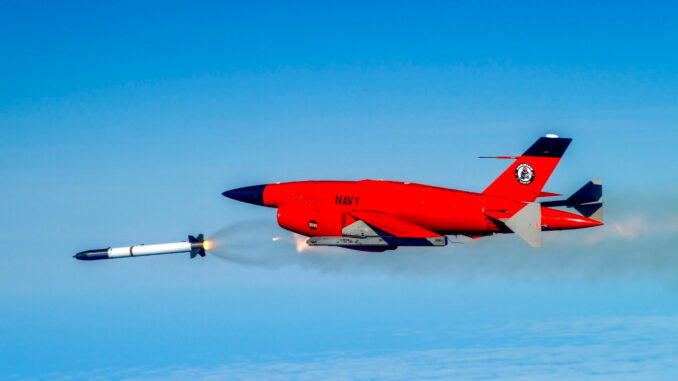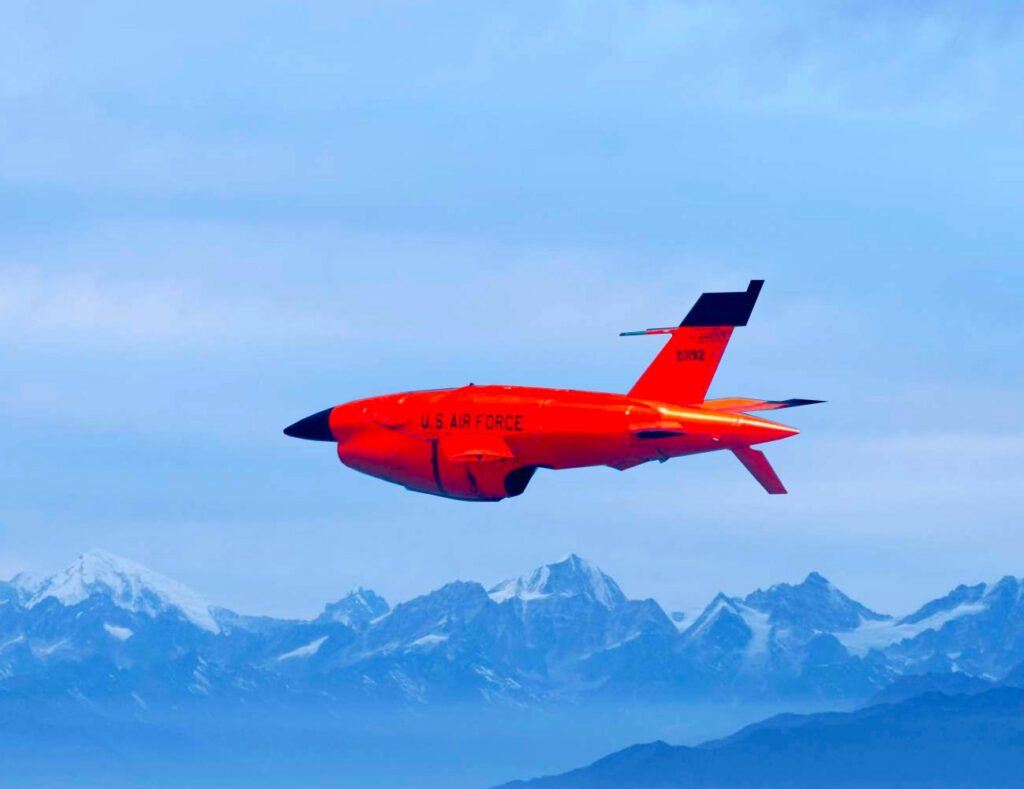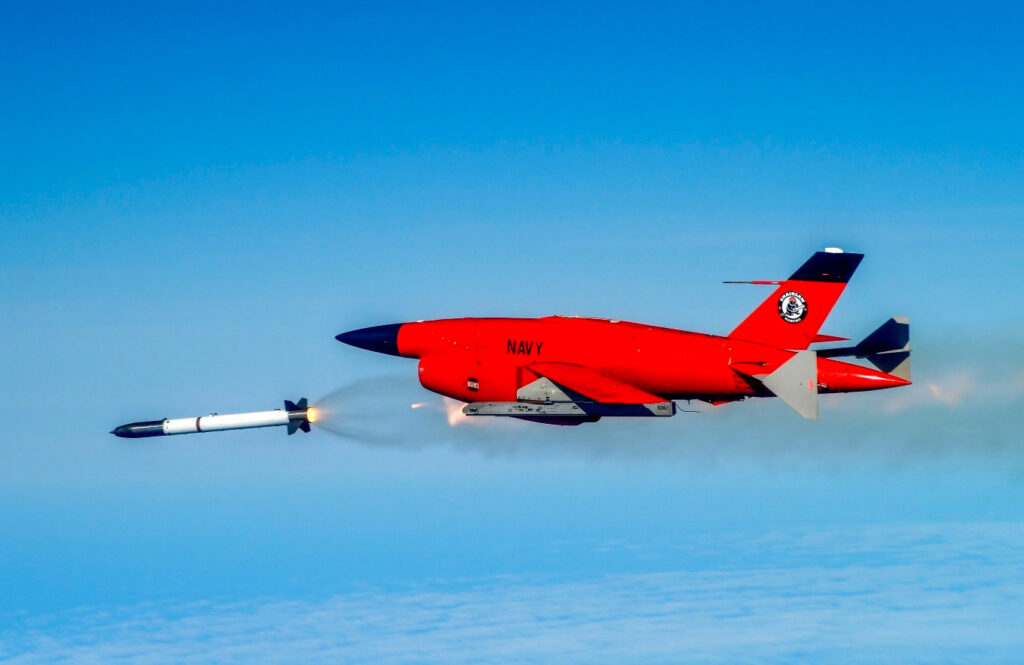
The US Navy is testing a solid-fuel ramjet missile launched from a drone, targeting extended range and rapid deployment.
A solid-fuel ramjet missile launched from a drone
The Naval Air Warfare Center Weapons Division (NAWCWD) has announced that the US Navy has conducted the first launch of a Solid Fuel Integral Rocket Ramjet (SFIRR) missile from a BQM-34 target drone. This test marks a significant step forward in the integration of high-speed propulsion systems on unmanned platforms.
This technology is based on a concept that has already been explored in previous decades: the ramjet. The SFIRR uses the same principle, but replaces traditional liquid fuel with an integrated solid fuel, simplifying the internal mechanics while maintaining high speeds. The objective is clear: to enable compact missiles to achieve longer ranges with reduced logistics.

Technology designed to extend operational range
One of the main operational advantages of the SFIRR is that it increases the engagement range while remaining out of reach of enemy defenses. Thanks to its launch from an unmanned platform, it is possible to strike targets at a distance while limiting the exposure of the forces engaged.
This test firing not only verified the missile’s ability to be launched from a drone, but also validated key technical elements, including trajectory control, flight stability, and the operation of the solid-fuel ramjet engine.
According to Abbey Horning, advanced concepts manager at NAWCWD, this success confirms the validity of the design and represents a step toward a long-range strike system suitable for modern naval operations.
The advantages of solid fuel in a ramjet
The use of solid fuel integrated into the missile body eliminates the complexity of pumps and tanks associated with liquid fuel engines. This choice has several practical implications:
- Reduced overall missile weight
- Fewer mechanical parts, meaning fewer failures
- Simplified storage and handling
- More stable acceleration during launch
These characteristics make it possible to consider lighter missiles with increased payload, while maintaining a range suitable for strike missions from remote platforms.
Accelerated development thanks to rapid prototyping
The SFIRR demonstration program was developed in less than 12 months. This is part of the Navy’s stated goal of reducing development cycles to accelerate operational entry.
This development model bypasses traditional industrial approaches, which are often more rigid, in favor of early testing and rapid adaptation to field constraints. By shortening the time between design and testing, the Navy can respond more quickly to the needs of theaters of operations.
The method used here is reminiscent of that employed by certain civilian tech and aerospace companies: deliver a functional version, observe, correct, then industrialize. This reflects a cultural shift in the approach to US weapons projects.
A direct response to naval requirements
The SFIRR missile is designed to meet three major requirements in modern maritime operations:
- Increased range without relying on a fighter jet to approach the target.
- Credible long-range strike capability.
- Deployment from autonomous or remote-controlled systems (unmanned ships, aerial drones, or submarines).
By integrating the SFIRR into autonomous or remotely piloted platforms, the Navy can consider saturation or deterrence strikes without having to commit human resources or expose high-value assets.
The system is not a substitute for Tomahawk-type cruise missiles or hypersonic munitions, but offers an intermediate capability between conventional naval artillery and costly strategic strikes.

Technology based on an old foundation, but adapted
The concept of a solid-fuel ramjet is not new.
Already explored in the 1970s and 1980s, it was rejected due to technical limitations and the emergence of other strategic priorities.
Recent advances in materials, embedded microelectronics, and digital modeling now make it possible to revive this technology on a more reliable and operational basis.
According to Ephraim Washburn, deputy director of energy systems at NAWCWD, the modernization effort is similar to that seen in the automotive industry: starting with a proven concept and adapting it to current constraints.
A program that is part of a global strategy
The SFIRR test firing is part of a broader set of US Navy initiatives aimed at strengthening long-range strike superiority while reducing dependence on manned platforms.
The next areas of work announced include:
- improving terminal accuracy
- optimizing engine energy consumption
- resistance to disruptive environments (jamming, weather conditions)
- compatibility with different launch vehicles
The challenge is to provide a reliable, inexpensive-to-produce tool that can be used in large numbers to saturate enemy defenses or strike high-value targets.
Operational prospects and limitations
If the SFIRR missile delivers on its promises, it could be quickly integrated into weapon systems carried by surveillance drones or autonomous vessels. This would open up unprecedented tactical possibilities, particularly in contested areas such as the South China Sea or the Persian Gulf.
However, certain limitations remain:
- Terminal maneuverability will need to be validated in real-world conditions.
- The cost of mass production has not yet been disclosed.
- The missile’s ability to adapt to third-party guidance systems will need to be tested.
The SFIRR is part of a major trend toward reducing human involvement on the front lines and increasing the use of automated systems. It is not a technological revolution in itself, but a relevant use of older technical components that have been brought up to date. The Navy’s decision to revive this type of propulsion is part of a clear desire for flexibility, cost control, and rapid response to changes on the battlefield.
War Wings Daily is an independant magazine.